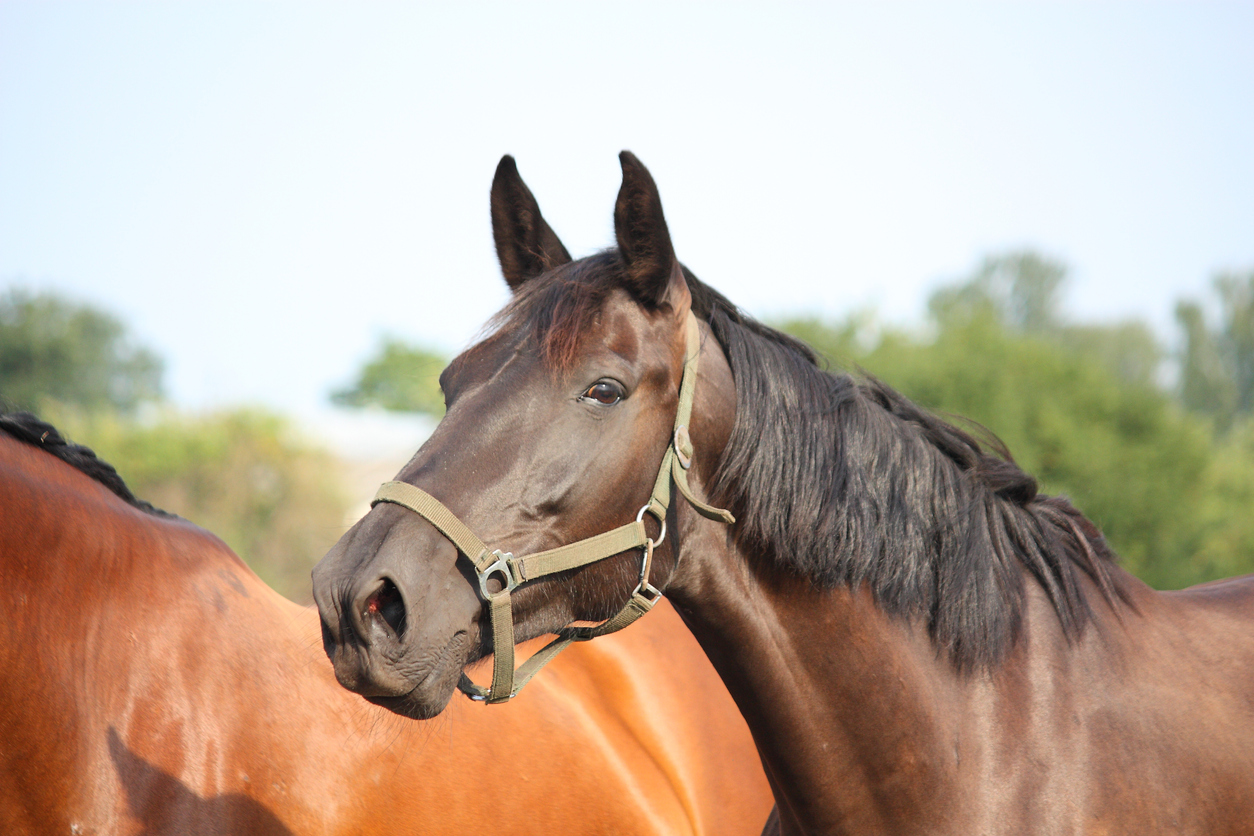Home > Horse Care > Listening to Your Horse's Lungs
Listening to Your Horse’s Lungs
- March 6, 2024
- ⎯ Equus
Just as lung sounds can reveal a lot about our own health status, the noises your horse makes when he breathes can be quite telling. Horses with advanced respiratory distress emit rasps and wheezes audible to your unaided ear. To hear the more subtle sounds of brewing trouble, however, you’ll need a stethoscope and a certain proficiency in using it. Practice often when your horse is healthy, so you will be able to recognize abnormal noises when they do occur. An inexpensive stethoscope designed for listening to adult lungs (available at most drugstores) is best for listening to your horse’s lungs. More expensive canine or pediatric stethoscopes won’t pick up the low-frequency sounds of normal equine respiration.

Position the horse in a quiet area, out of the wind and away from barn sounds. On an average-size horse, place the stethoscope about 5 inches behind and 7 inches above the elbow (just behind the girth and below the saddle flap on a horse wearing an English saddle). Listen for the gentle blowing sounds of healthy lungs, similar to someone blowing to cool hot soup. These soft sounds can be hard to distinguish amid the heart thud and gut gurgle of the horse’s interior. You can make lung sounds more audible by causing the horse to take some deep breaths. Have a helper pinch off the horse’s nostrils so he can’t inhale for 30 seconds or more, until he really objects. When the horse finally pulls away (which he most certainly will), he’ll take a few very deep breaths. That’s when you’ll hear the amplified lung sounds.
Click here to read an in-depth article on the many myths about strangles.
As you learn to elicit and distinguish lung sounds, listen for noises different from the gentle whoosh of unimpeded airflow. Anyone of the following noises, paired with other signs of respiratory disease, are cause for concern:
Loud sounds over a large area. Most lung noises are only heard over a 3- or 4-inch section of chest wall. If you can hear blowing noises over a larger area, the lungs may be congested.
Bubbling sounds. If you hear lung noises similar to someone blowing through a straw stuck in a milkshake, the lungs contain excess fluid.
Squeaking sounds. A high-pitched squeak, usually at the end of inhalation, can indicate an airway obstruction due to inflammation or a physical blockage.
Uncharacteristic silence. You know the sounds of normal lungs, but this time you hear next to nothing, meaning that the airways are not active. If you encounter this very rare silence, the horse is bound to be exhibiting other obvious signs of distress.
This article first appeared in EQUUS, Issue 270.
Don’t miss out! With the free weekly EQUUS newsletter, you’ll get the latest horse health information delivered right to your in basket! If you’re not already receiving the EQUUS newsletter, click here to sign up. It’s *free*!





